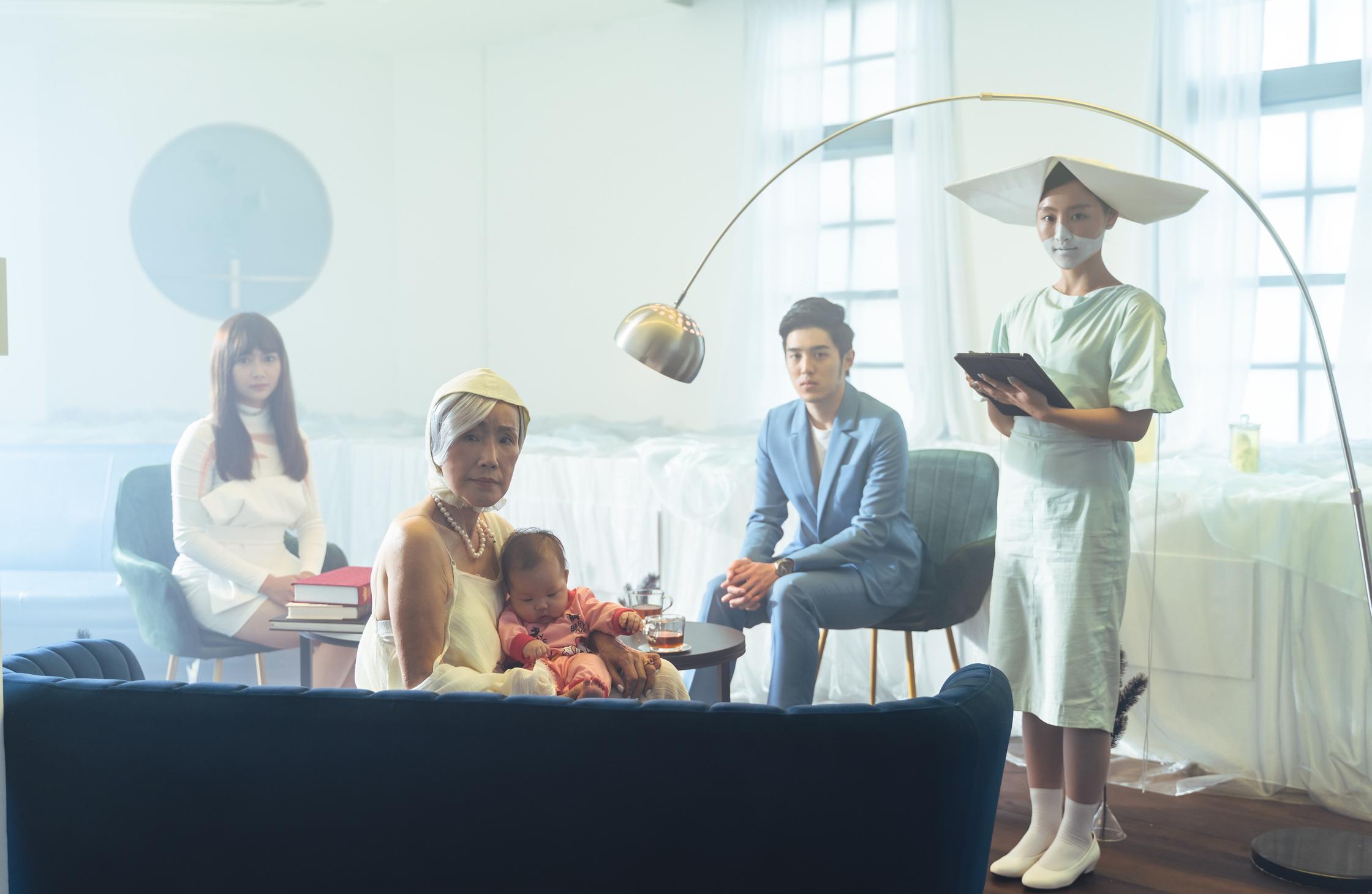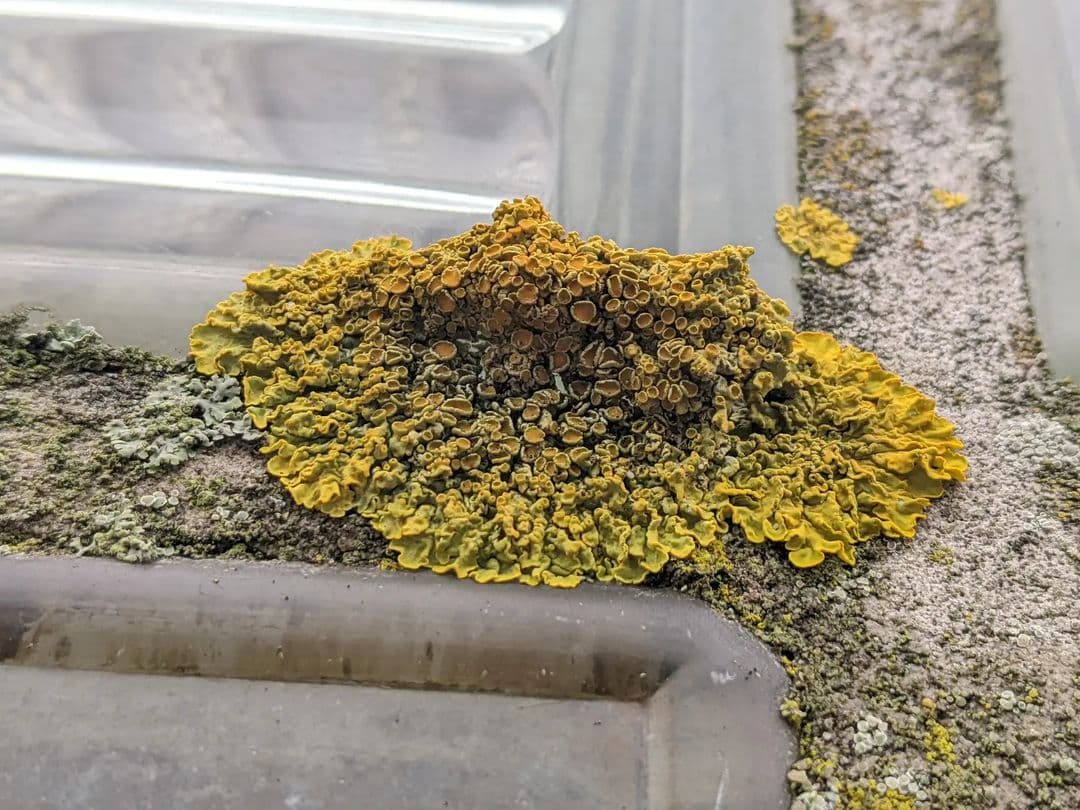If your mom could bear your child, would you do it? And if so, on what grounds? The provocative, speculative artwork ‘Grandmom Mom’ raises these and more ethical questions on artificial reproduction in the nearby future. On the 8th of July, Waag hosted a livestream with bio-artist, speculative designer and former dentist Kuang-Yi Ku, where he presented his project. One of his driving ideas behind the project was to not postpone ethical reflection on such important matters until the technology arrives - you’re invited to think ahead with us.
The programme consisted of a presentation by the artist Kuang-Yi Ku, followed by a VR film screening on the Grandmom Mom narrative. Also part of the programme was Next Nature Networks’ researcher Hendrik-Jan Grievink, who gave a short presentation of their work ‘Reprodutopia’. The livestream finished with a panel talk, where some interesting questions and answers on artificial reproduction were raised.
The speculative narrative: Grandmom Mom
During his education as a dentist in the medical department, Kuang-Yi Ku noticed that there wasn’t much room for raising ethical questions. That’s why he’s now combining research questions with art. Although he is currently working as a bio-artist and a speculative designer, his work often relates to medical technology: ‘I’m interested in how medicine can combat future human challenges.’ Ku is based in Eindhoven and has worked with Waag before as an artist in residence in 2018.

‘Grandmom Mom’ is a futuristic scenario, set in 2050. Kuang-Yi Ku placed the Medical Geriatric Pregnancy Center in this nearby future. The luxurious, expensive-looking institution houses a new medical care system, that combines long-term care with a hospital of obstetrics and gynecology, a postpartum care centre and an infant care centre. It’s a medical service system in which grandmothers can help their daughters, by bearing their children.
Outsourcing our sex organs
But first up in the programme was researcher Hendrik-Jan Grievink from Next Nature Network (NNN). Grievink: ‘I got interested in the question of new emerging reproductive qualities that change the story we as humans tell ourselves. We’re storytelling animals, and therefore, we surround ourselves with all kinds of mythologies. New technologies challenge us to rethink those stories.’
‘From a biological point of perspective, reproduction means sex. Humans like to bring intimacy and values into that, but technically it’s the species' attempt to survive by creating a new generation.’ Grievink notices how intimacy between humans has been severed by technologies such as IVF, embryo selection and artificial wombs. ‘From a design perspective: to what extent will intimacy be outsourced by technology? Will we outsource our sex organs?’
Design your family in Reprodutopia
If there were no restraints, how would you design your family? This is Reprodutopia. Grievink: ‘We provide stories like Reproductopia to see what people would imagine for themselves. What does it mean to be human? Might artificial reproduction be an opportunity to improve gender equality, because the childbearing doesn’t have to be done by people of a certain gender and age?’ Threats, weaknesses and strengths of such plans can also be addressed.

Reprodutopia was also turned into a clinical, mobile environment that was showcased during Dutch Design Week at the Embassy of Health. There, one could for example try on a wearable artificial womb, with which they could engage and record their feelings, fears, hopes and dreams. Reproductopia also created visuals of pregnant men, and a visual map of the imagined Reprodutopia place, consisting of four countries, allowing the visitor to decide where they feel most (or least) comfortable.
The idea behind Grandmom Mom
Let’s return to ‘Grandmom Mom’ and the reason why the artist would suggest the scenario of grandmothers bearing their daughters' children. One of the reasons is the ‘jaw-dropping global crash in children being born’, as the header of an article states. On the one hand, Kuang-Yi Ku sees the reason for this in women who’d like to be able to work on their careers. ‘But it’s also a dilemma: by working, aren’t women just serving the capitalist system? Is it then utopian or dystopian? I’m inviting the public to rethink the issue of childbearing at a certain age.’
He continues: ‘The institutionalisation presented in Grandmom Mom also reinforces a constructed fragility, where the institution tries to control all female bodies to maintain the needs of the capitalist world.’
Kuang-Yi Ku also points out the cultural differences within parent-child relationships. ‘In Asia, there’s a very strong bond between the parent and child.’ Often, this leads to high pressure for children from their parents, who want them to reproduce the next generation. Ku points out that Asian parents might be more willing to bear their children’s offspring then maybe European or western parents would be.
On creating the Virtual Reality of Grandmom Mom
In order to create a persuasive and realistic Medical Geriatric Pregnancy Center, artist Kuang-Yi Ku started talking to medical consultants. ‘If elderly women get pregnant, there are certain risks. But if they are well taken care of, it could be possible. I tried to imagine if technologies can get upscaled. What kind of services are provided to elderly women and what would they look like in the institution of the International Geriatric Pregnancy Center?’

To fully involve people with the speculative narrative of Grandmom Mom, he collaborated with film director Lungyin Lim. ‘The idea of Virtual Reality (VR) took a long time to finalise,’ the director explains. ‘Kuang-Yi had a futuristic scenario in mind, and we spent a lot of time trying to convey the idea. As a filmmaker, I wanted to find the best tool to support the narrative. The moment you put in certain angles or lights, you already start framing. We wanted to keep some things open, and virtual reality allowed that.’
‘Virtual reality provides the opportunity to put you in a different space, and to let you be the decision maker on what you’d like to see.’ With the arrows in the VR, you can freely move around in the Medical Geriatric center. The aesthetics of the lighting and costumes look very pleasing and well-thought through. ‘The difference between VR and traditional formats is that we take a step back to let you see and feel. That’s one of the key elements: how would you make a choice, and how would it affect you?’
The beautifully designed human body
After the screening, a panel discussion followed, with Kuang-Yi Ku, Hendrik-Jan Grievink, dr. Chen Yu Ping (gynecologist and midwife), dr. Yu-Chieh Yang (School of Medicine, Taipei Medical University) and filmmaker Lungyin Lim. Lucas Evers of Waag moderated the discussion.
When asked how the speculative scenario of Grandmom Mom could be realised, dr. Yang starts off with expressing her hesitance towards the idea: ‘an artificial womb might solve some problems, but if we take evolution into account, the human body has its own design that is far more difficult and beautiful than the artificial version. The interaction between the fetus and its mother is irreplaceable.’

‘As a mom of two children, I can say that this is something you can’t replace artificially. But of course, we can see the motivations of gay couples or women who can’t get pregnant. When it gets commercialised and industrialised, though, I don’t see the added value behind it.’
Dr. Ping adds: ‘we’re actually encouraging women to use their own human power during childbirth, and to not use technology too much. But Kuang-Yi explained to us that this project evokes questions of what is natural, and what is birth.’
The mechanical womb as male fantasy
Lucas Evers then asked Hendrik-Jan Grievink the following: ‘historically, most of medical science has always been male-dominated and therefore, it can be male biased. Isn’t the mechanical womb as presented in Reprodutopia just a male fantasy?’

Grievink admits that he was also asking himself this question. ‘It all started with a discussion, where we were talking about having children, when my (female) partner said: “if you want a child, why don’t you get one yourself?” This sparked my imagination. Technology reflects our human values. It allows us to have a conversation with ourselves, even before the actual technology has arrived. Artificial reproduction isn’t something that I would like to see, but it does provide for a framework, and it can act as a conversation starter.’
Kuang-Yi Ku: ‘these ethical questions aren’t usually raised in medical departments. Medicine seems objective, but this of course is not the case. Doctors might have their own opinions. They are mostly against artificial reproduction, but still I convinced some of them to collaborate on this project. I made sure to include female doctors to take their perspective into account.’
Then, someone in the livestream chat asks: ‘would you put your own mother at risk of illness to grow your baby?’ Kuang-Yi states: ‘this is a crucial question for the project. As a gay man, reproduction is not a possibility for myself and my partner. I would need a female surrogate. But should it be my own mother? And should we want that in a more general sense? It depends. In Asian culture, parents sacrifice themselves for their kids. Grandmom Mom questions these traditional parent-child relations.’
Speculation and dystopian scenarios
Should these new reproductive technologies be available to everyone? Hendrik-Jan Grievink reflects on the term ‘techno-privilege’: it is important to take a critical look at the way technologies can privilege only certain groups of people, or create a divide between humans, non-humans and technology. But he also adds: ‘once you bring a group of people together, the discussion is always the same. The arguments in future speculation on technologies are mostly about the mechanics. It’s easier to look at the dystopian effects of stories, then to actually create a utopian scenario that people would actually want to live in.’

Kuang-Yi Ku: ‘My previous project, The Tiger Penis Project, is one I would really like to see realised in a utopian sense, because it saves tigers and traditional medicine. ‘Grandmom Mom’ is of course a bit more dystopian. In Taiwan, there are many traditional groups that want to erase all sex education. That’s why, also, sometimes I just want to scare people by creating a speculative narrative. But I agree with Hendrik-Jan: positive speculations for the future are the most difficult to create.’
Discrimination against pregnant women
A last question from the public expresses the worry of artificial reproduction as an amplification of gender inequality. ‘Will pregnant women be discriminated in the future, if they themselves want to become pregnant and will therefore not work [in the sense of paid work] for a while?’
Onto which dr. Yang answers: ‘Discrimination against pregnant women is already a reality. In the Netherlands it might be different. But bearing and raising a child is a very big job. It needs social support and that’s far from enough right now, in Taiwan. In the future society, you’d like to see more social support.’


